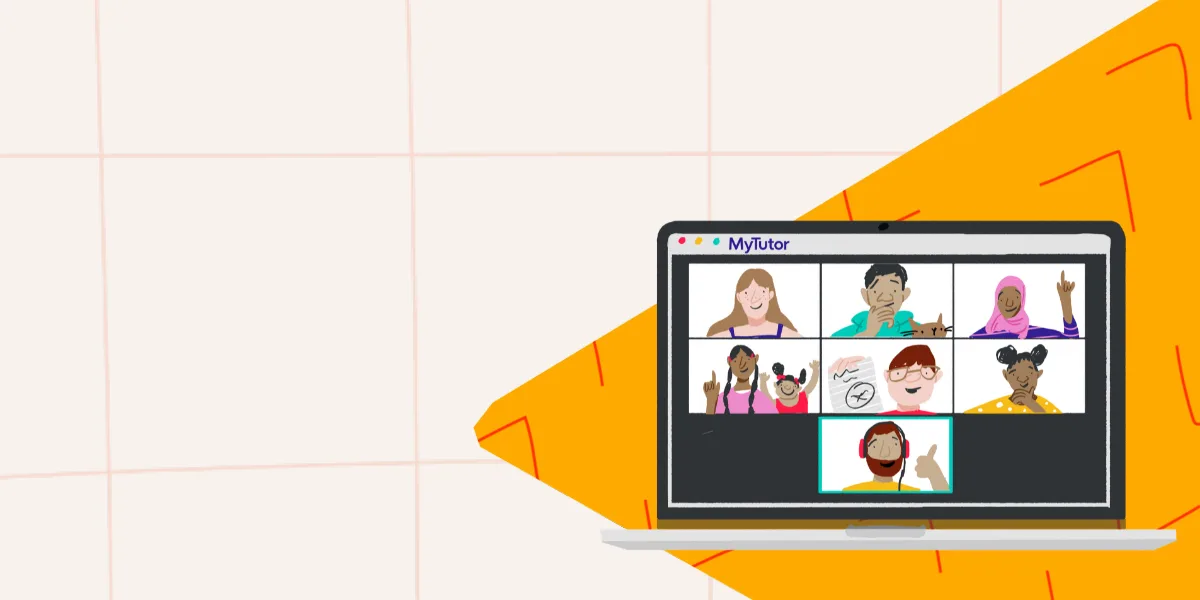

This is a guest blog written by Tahidur Rahman, a Maths and Science tutor on MyTutor.
Taking a group lesson can be daunting. In fact, I used to actively avoid 3-1 lessons as I didn’t feel comfortable with leading a group of students. However, after building up my self-confidence, I accepted a group lesson and now they are some of my favourite types of lessons to be a part of. Here are my four top tips for running a successful 3-1 lesson:
1. Make the most of your students’ profiles 🗈
For school opportunities, student profiles can offer so much information before even stepping into the lesson space. You can find out things such as the exam board, the current grade as well as the target grades of each student and specific areas of focus. But, the thing that can be most beneficial when working with groups are the teacher’s notes about eachstudent in particular. This can range from behaviour patterns to learning challenges and can enable you to better prepare for your sessions with your group.
However, don’t take everything you see on the student profile at face value. Double-check everything with your students as there can be errors in the profile that cause you to give work that is either too challenging or too easy. Speak with the students individually and collectively and discuss if they agree with their profiles or if there are any discrepancies. Sometimes this can be an error about what tier paper they are on or it could just be a discussion about the topics they would like to prioritise. Creating goals together can be really beneficial to getting the students to engage with the lessons from the get-go.
2. Encourage engagement throughout the lesson ✋
We’ve all been students in a classroom at one point or another. We know that there are some students who are confident in answering questions and those who have a more reserved demeanour. When given the opportunity to contribute to a discussion in a smaller group, these students often feel less inhibited and more valued.
It’s up to us to ensure that all the students are able to benefit from their tutoring sessions. Ask questions directly to a student instead of a general question to the group. This helps us as tutors to identify whether the entire group understands the material covered and therefore,allows us to plan the next steps accordingly.
3. Have multiple resources at the ready 📚
You should always have a range of resources available to you to find out the level they’re working at, as well as the level we aspire for them. This serves a multitude of purposes:
• Gain an insight into the current level of each student as well as where their strengths and weaknesses lie.
• Opportunity to discuss with the students the objectives for the lesson. Discussing clear goals and targets helps give the students something to aim for by the end of the session.
• Ability to offer more challenging work if necessary: it’s better to be over-prepared than underprepared. If the students are finding the work originally planned too easy, then don’t be afraid to be flexible and adjust your lesson plan.
4. Make sure to guide the conversation
Group tutoring requires a more conscious leadership role. As attention between students is split and the students could avoid contact with the tutor, it’s up to you to not dominate the conversation but guide it. You could:
• Ask a question and get all three students’ responses, and then ask them to convince one another why their answer is the correct one. This helps the students understand what they’re doing, and why they’re doing it. An explanation from a peer is sometimes the best example they can get.
• Allow time and space for students to develop and prepare their responses: If they face challenges, then point to the resources to help them find the answer.
• Always end the session on a positive note: This can be done by asking them what they have learned in the session, how confident do they feel, what needs to be clarified, or what they would like to cover in the following sessions.
Hopefully, these four tips can help give you the foundations to create a prosperous learning environment in a 3-1 lesson. I hope they provide great benefits for you and your students.
For more blogs to help you with tutoring, check out the following:
- Tips for your first tutoring lesson
- What makes a good tutor
- How to structure a tutorial
- Tutoring advice to get your lessons off to a great start
As always, if you have any questions or feedback, we’d love to hear from you. You can reach us on tutors@mytutor.co.uk or 0203 773 6024.




